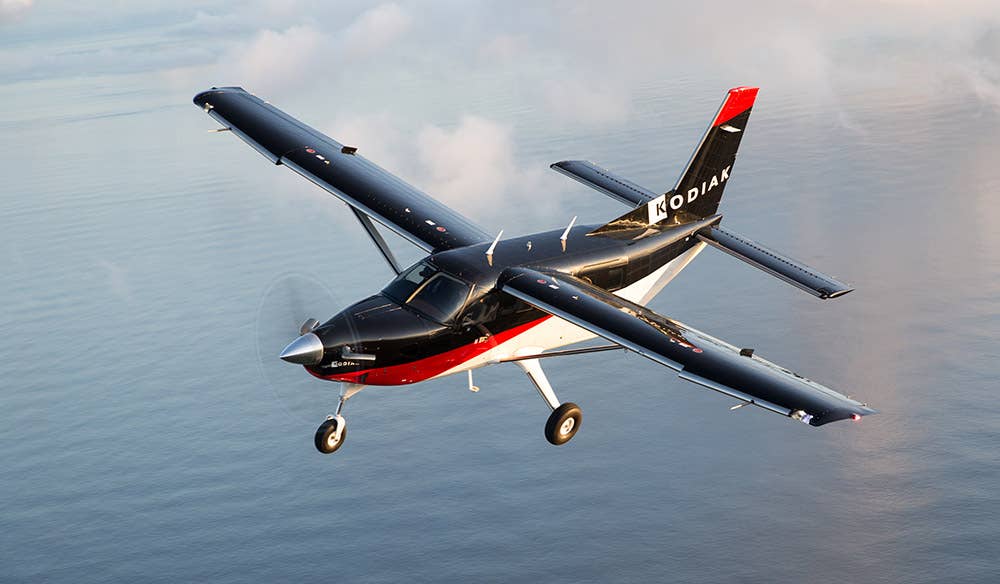
Quest had made some significant upgrades to the Kodiak, but the single-engine turboprop still loves the backcountry. Quest Aircraft
Ever since Quest certified the Kodiak in 2007, the Sandpoint, Idaho-based company has made continuous modifications to its single-engine turboprop. Unlike many aircraft manufacturers, however, Quest didn’t make a big deal out of these changes. However, recent improvements have prompted the company to make a public announcement.
The most significant change in what Quest is calling the Kodiak 100 Series II is the upgrade to Garmin’s G1000 NXi avionics suite, which is a major improvement over the original G1000. A few of the new safety features include a vertical situation display, a dedicated page for weight and balance, and the ability to choose a visual approach path right on the MFD. The PFD accommodates a moving map on the HSI, and synthetic vision is included. L3’s ESI-500 electronic standby instrument eliminates the need for analog gauges on the panel.
Additional safety is provided by Safe Flight’s angle of attack indexer, which is mounted in the pilot’s field of vision on top of the glare shield. The AOA can be particularly helpful in the backcountry, where the Kodiak was meant to fly.
The Series II upgrade also includes ADS-B In and Out through Garmin’s GTX 345R transponder. The Flight Stream 510 allows the G1000 NXi to communicate with an iPad, so you can see all the ADS-B traffic and weather on Garmin’s Pilot app or ForeFlight and do all of your flight planning at home and push it right into the panel. Faster processor speeds make start up, zooming, and panning a lot quicker.
While only cosmetic, the Series II version’s interior has seen significant upgrades with executive-style materials. To add branding accents, the yoke covers, doorsills, seats, windscreen cover, coffee table book and many other components proudly sport the Kodiak logo.

Sign-up for newsletters & special offers!
Get the latest FLYING stories & special offers delivered directly to your inbox






